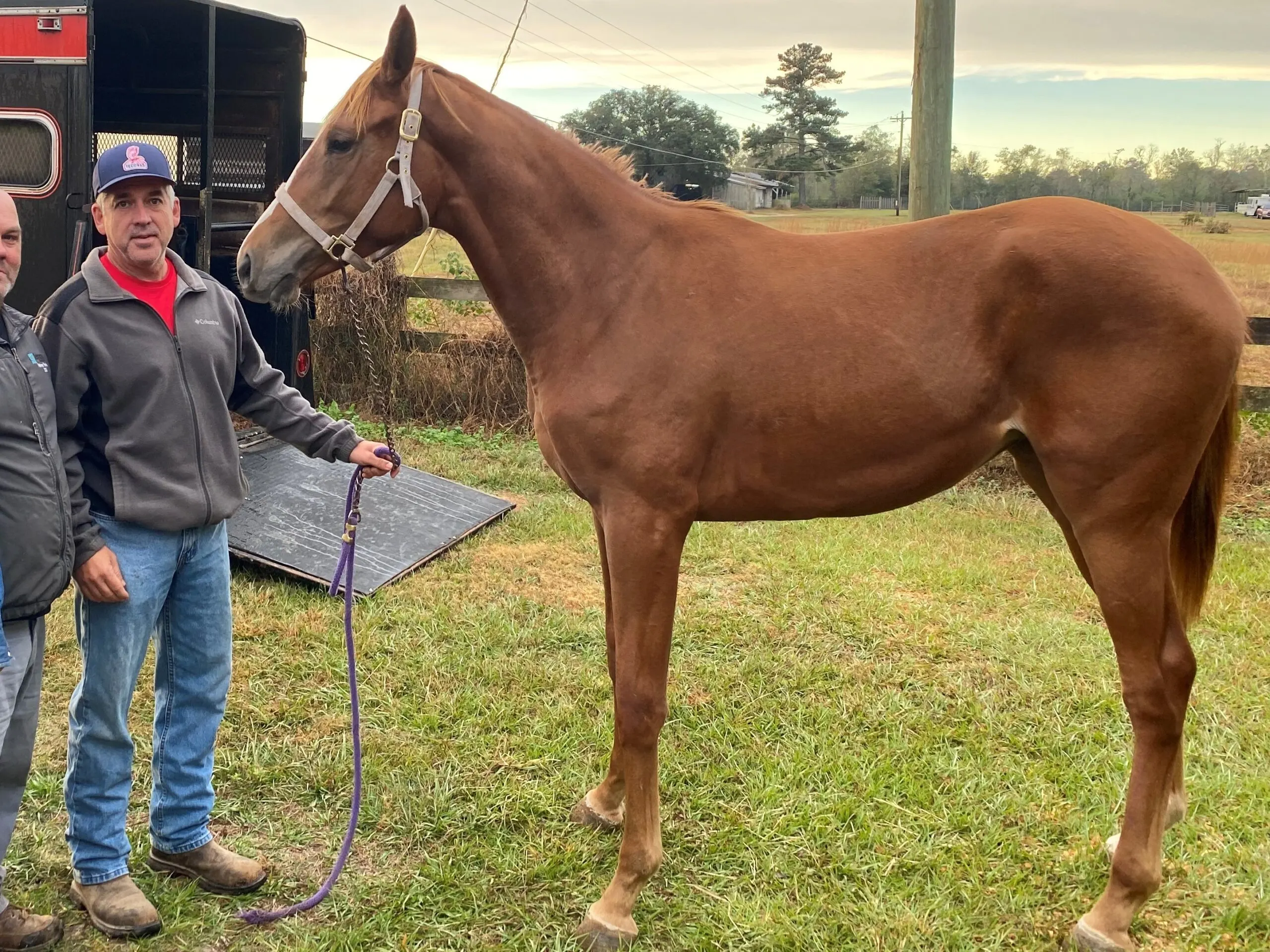Last updated: March 11, 2024
Ever seen a horse that looks like it stepped out of a fairy tale? Meet the Gypsy Vanner Horse, a breed that combines strength, beauty, and a gentle temperament into one magnificent package.
Originating from the British Isles, this breed has captured the hearts of horse lovers worldwide. Let’s dive into what makes the Gypsy Vanner Horse truly unique.
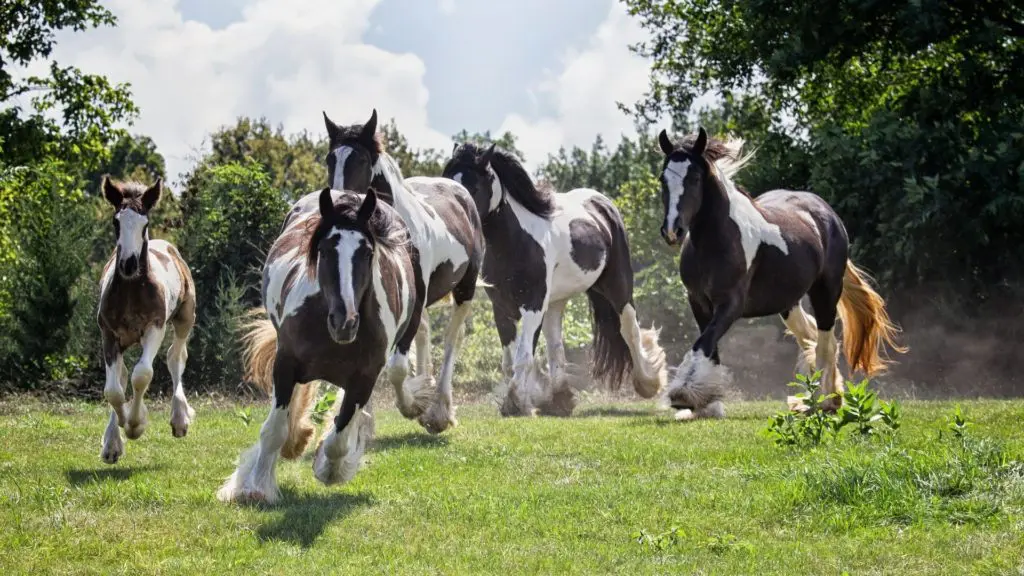
History and Origin of the Gypsy Vanner Horse
The Gypsy Vanner Horse, often simply called the Gypsy Horse, has its roots in the Romani communities of the United Kingdom and Ireland.
Bred for over a century, these horses were the dream of the Romani people, who wanted a horse that was strong enough to pull their vardos (caravans) yet gentle enough to be around their families. The result is a breed known for its exceptional temperament, striking appearance, and versatility.
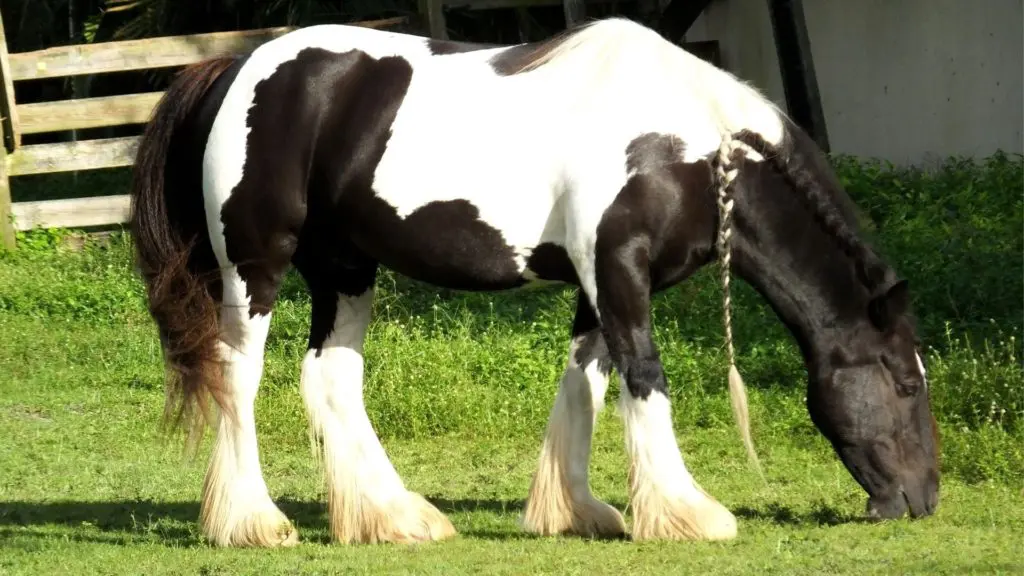
Key Characteristics and Size of Gypsy Vanner Horses
Gypsy Vanners captivate with their distinctive looks, characterized by flowing manes and tails, feathered legs right down to their hooves, and a robust, muscular build. Their striking appearance is complemented by a variety of coat colors and patterns, making each horse uniquely beautiful.
Size:
- Height: Gypsy Vanners typically stand between 13 and 15.2 hands high, placing them in the compact yet sturdy category of horse breeds. This height range contributes to their versatility and agility in various equestrian disciplines.
- Weight: They weigh approximately 1,100 to 1,600 pounds, reflecting their strong and muscular physique. This weight range underscores their power and endurance, traits highly valued in both work and leisure contexts.
Temperament:
The Gypsy Vanner’s temperament is among its most cherished attributes. Renowned for their gentle, friendly nature, these horses exhibit a remarkable willingness to please.
Their calm and sociable demeanor makes them ideal companions for riders and horse lovers of all experience levels. They foster a deep, meaningful bond between horse and handler.
Colors and Patterns:
Gypsy Vanners are often recognized for their piebald (black and white) and skewbald (brown and white) color patterns, which are among the most prevalent. However, they also exhibit a wide range of other colors and patterns, including solid hues, showcasing the breed’s genetic diversity.
For more on their colors and patterns, explore piebald horses patterns and colors and common horse coat colors and patterns.
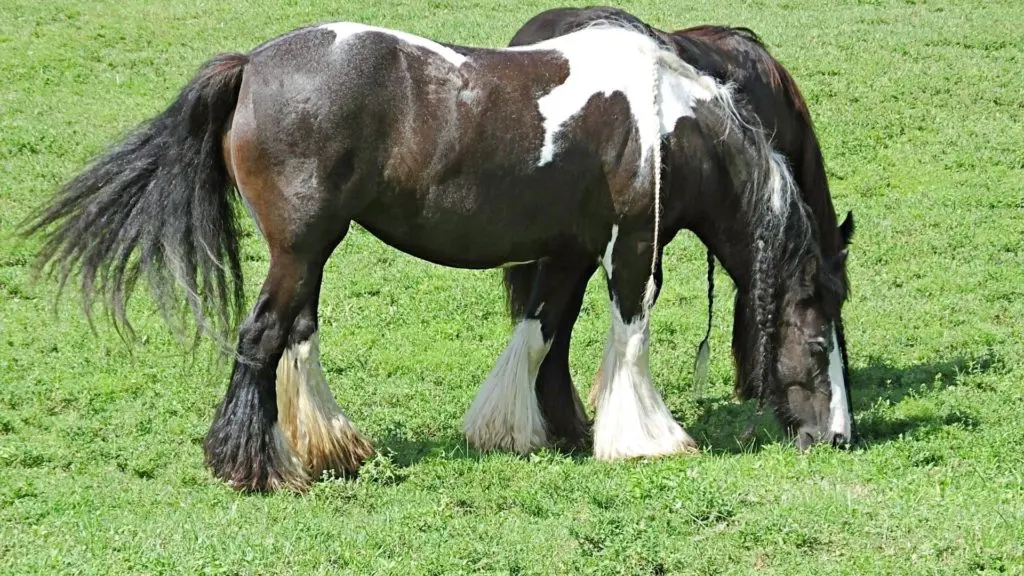
Uses and Disciplines
Originally bred to pull caravans, Gypsy Vanners are incredibly versatile. Today, they excel in a variety of disciplines, from dressage and jumping to driving and therapeutic riding. Their calm nature also makes them perfect for trail riding and as family horses.
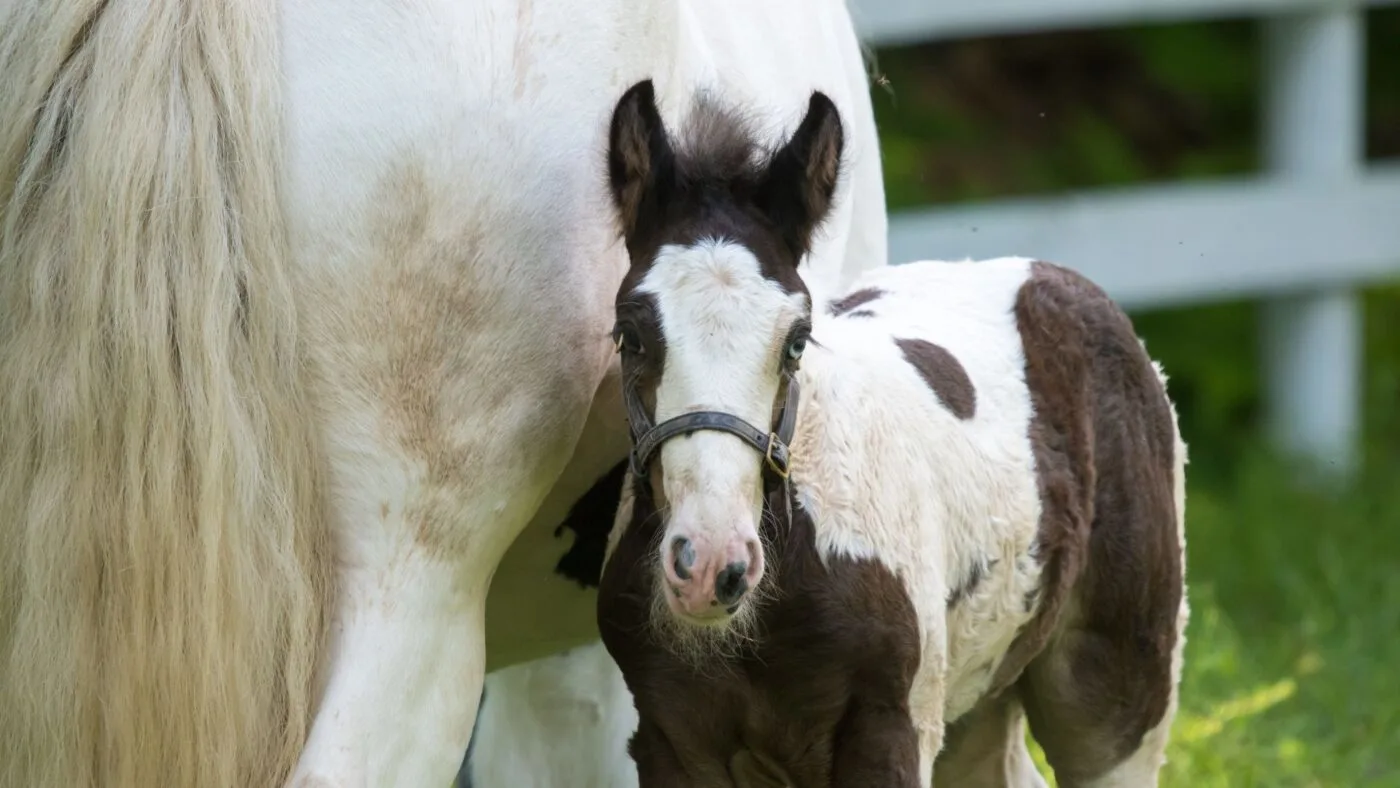
Care and Maintenance
Gypsy Vanners require regular grooming to maintain their long manes, tails, and feathers in good condition. They are hardy horses but benefit from a well-balanced diet and regular veterinary check-ups to ensure their health and well-being.
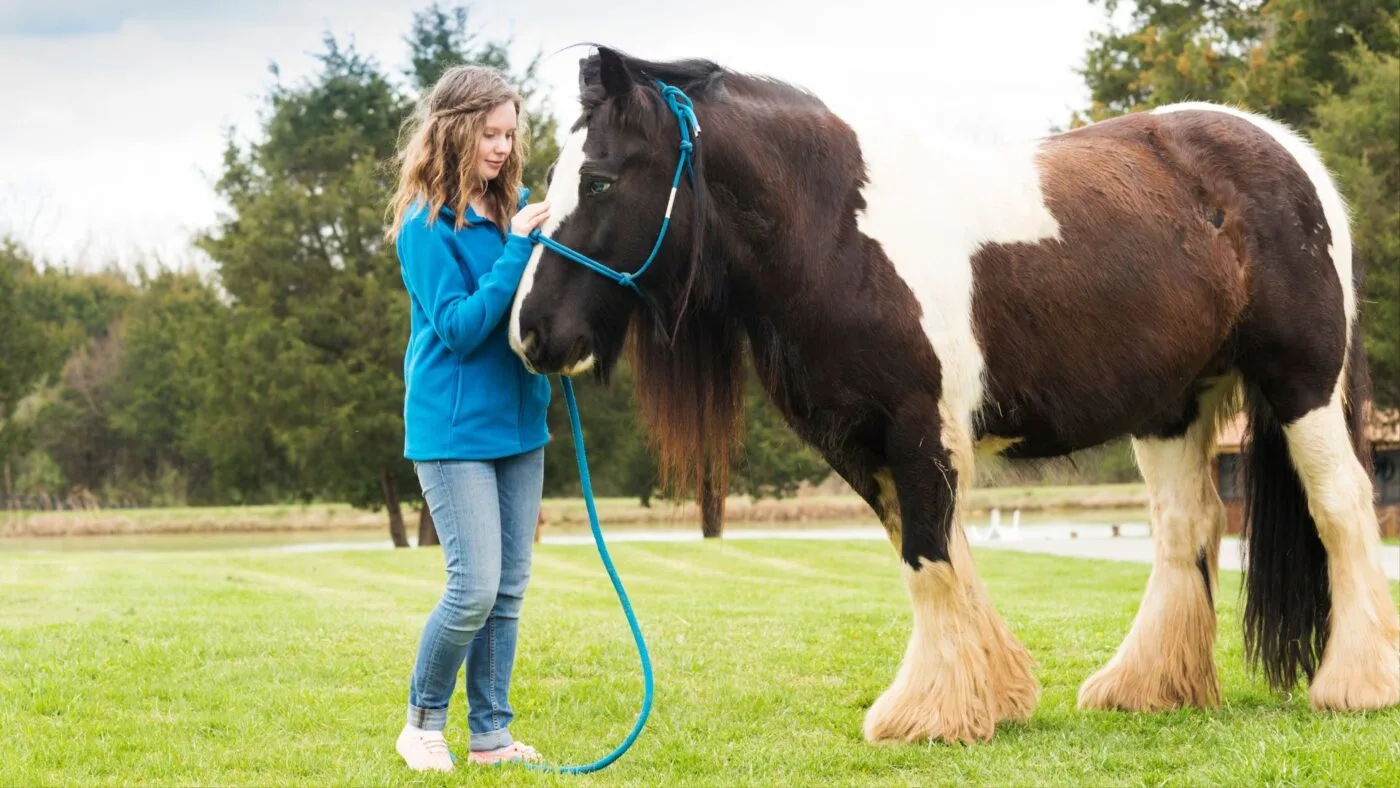
Common Health Issues and Preventive Measures
- Polysaccharide Storage Myopathy (PSSM): This genetic condition, affecting muscle metabolism, is seen in some Gypsy Vanners. Feeding a low-starch, high-fat diet and providing regular exercise can help manage this condition. PSSM1 and Gypsy Vanner Horses by Kathryn T. Graves, PhD Director University of Kentucky Equine Program
- Chronic Progressive Lymphedema (CPL): This condition, characterized by progressive swelling in the lower legs, is more common in breeds with heavy feathering. Regular cleaning and grooming of the legs can help prevent infections that exacerbate this condition.
- Skin Issues Under Feathering: The dense feathering can sometimes harbor moisture and dirt, leading to skin infections. Regular cleaning and checking of the feathered areas are crucial.
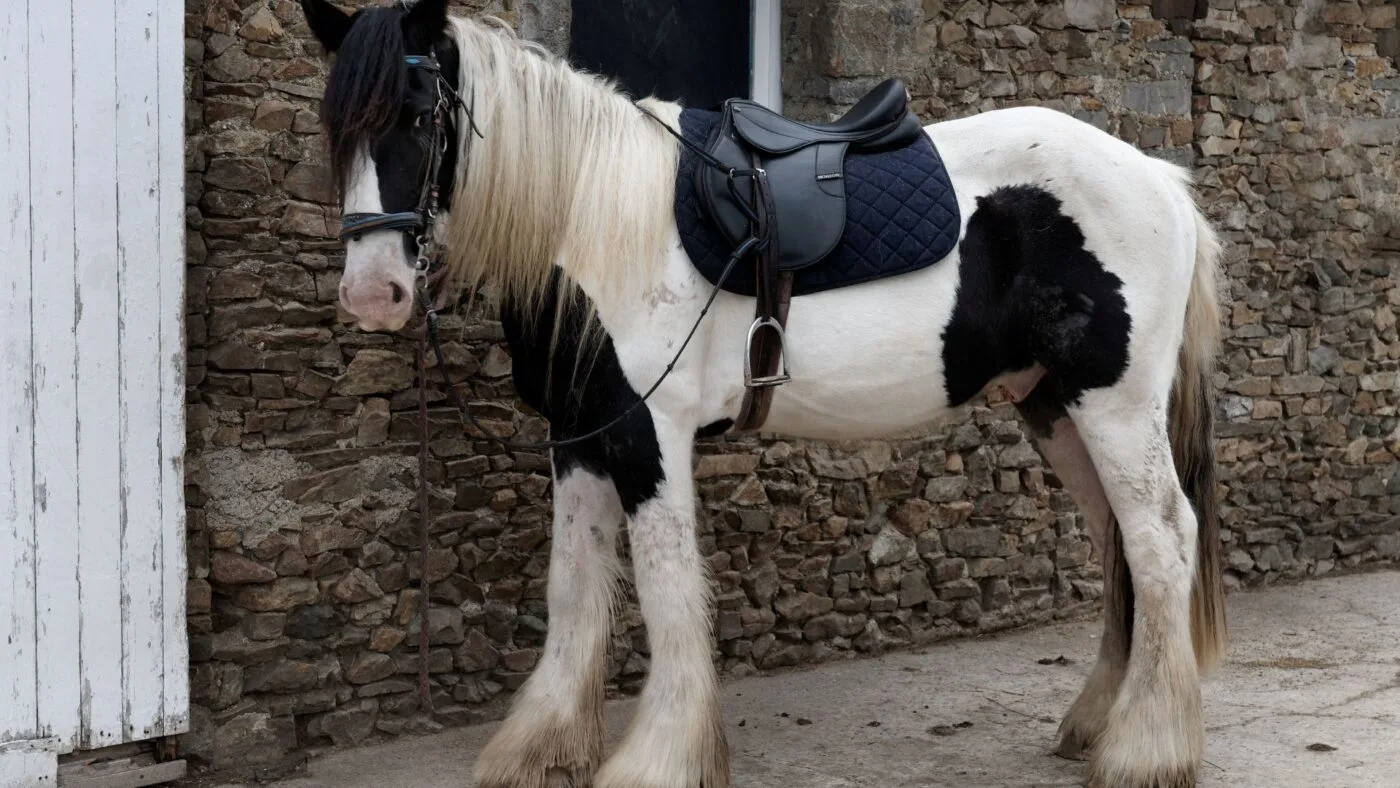
Why Choose a Gypsy Vanner Horse?
Choosing a Gypsy Vanner Horse means bringing a piece of fairy tale magic into your life. Their beauty, combined with an unmatched temperament, makes them a joy to own and work with. Whether you’re an experienced equestrian or looking for your family’s first horse, the Gypsy Vanner offers something special for everyone.
Learn about Gypsy Vanner horses with this YouTube video, courtesy of the Gypsy Vanner Horse Society.
Frequently Asked Questions (FAQs)
Are Gypsy Vanner horses suitable for beginner riders?
Gypsy Vanners are good horses for beginner riders; they are athletic, have an excellent temperament, and are willing to work. The Gypsy horse was bred to pull wagons but also to be ridden by children. They are gentle and patient.
Are Gypsy Vanners Gaited?
Gypsy Vanners aren’t a gaited breed. They have a short step to their trot, but it’s not a gaited movement in the traditional sense. Although the Gypsy Horse isn’t gaited, it maintains its head high and travels proudly.
Do Gypsy Vanner Horses Have Mustaches?
Some Gypsy Vanners do have mustaches. And not just a little bit of hair on their muzzles but an actual full mustache in the Yosemite Sam vain.
How Long do Gypsy Horses Live?
Gypsy horses’ life expectancy is roughly 24 years which is not much different than the lifespan of an average horse.
Conclusion
As we end our journey into the world of Gypsy Vanner Horses, it’s clear why this breed holds a special place in the hearts of horse lovers around the globe. With their fairy-tale looks, gentle dispositions, and versatile abilities, Gypsy Vanners are more than just horses; they’re a testament to the beauty and spirit of the equine world.
Whether you’re an avid equestrian or simply someone who appreciates the majesty of horses, the Gypsy Vanner offers a blend of charm and utility that’s hard to match. Their story, from the rolling hills of the British Isles to the diverse landscapes they grace today, is a reminder of the enduring bond between humans and horses.
We Want to Hear From You
Have you been lucky enough to interact with a Gypsy Vanner Horse? Maybe you’re considering adding one to your family or have already experienced the joy they bring. Share your stories and insights in the comments below. Your experiences enrich our collective appreciation for these enchanting horses and help others discover the magic of the Gypsy Vanner.
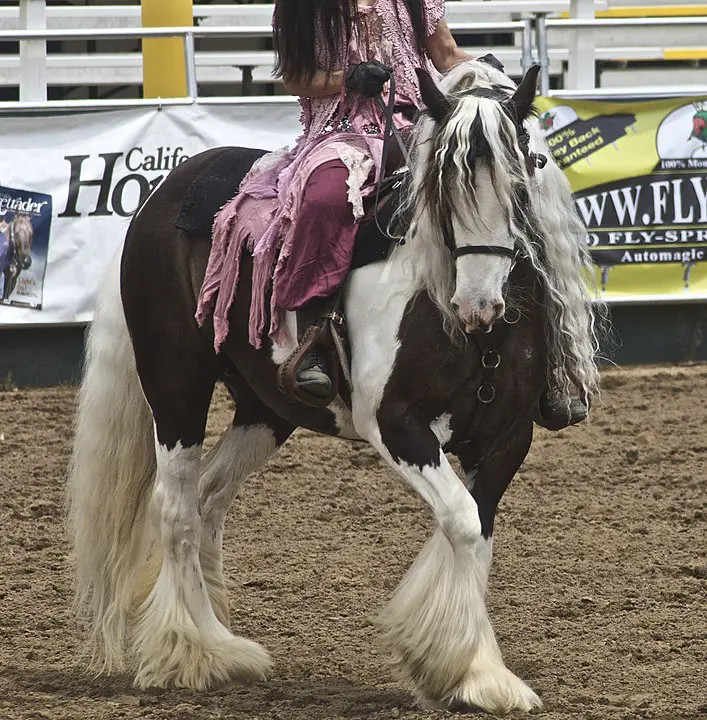
Additional Resources on Gypsy Vanner Horses
For enthusiasts, breeders, or anyone curious about Gypsy Vanner Horses, a wealth of resources is available to deepen your understanding and connection with this enchanting breed. Here’s a compilation of essential links and opportunities to explore:
Role of Registries and Associations:
- Documentation and Registration: The Gypsy Horse Association provides a comprehensive color chart and breed descriptions, crucial for accurate identification and registration.
- Standards and Guidelines: The Gypsy Vanner Horse Society upholds breed standards and ethical breeding practices, ensuring the preservation of the breed’s unique characteristics.
- Promotion and Education: These organizations play a key role in promoting the Gypsy Vanner and educating the public, organizing events, and providing networking platforms for breed enthusiasts.
Adoption Opportunities and Cultural Events:
- Adoption Opportunities: Equine Now’s Gypsy Vanner Rescue offers a chance to provide a loving home to Gypsy Vanners in need.
- The Annual Gypsy Vanner Event in England is a cultural and equine heritage celebration in Appleby-in-Westmorland, Cumbria. It showcases carriage races and offers a unique opportunity to purchase Gypsy Vanners.
Further Reading and Resources:
- Dive deeper into the world of Gypsy Vanners with resources from the Gypsy Vanner Horse Society and the Gypsy Horse Association.
These resources aim to support your journey with Gypsy Vanner Horses, whether you’re looking to adopt, learn more about their heritage, or connect with the community.
Poll Question
Thought-Provoking Questions or Insights:
- Breed Development and Cultural Significance: How did the Gypsy Vanners’ role in Gypsy culture influence their development, and what does their increasing popularity in various equestrian disciplines say about changing trends in horse breeding and usage?
- Health Management: Given the breed’s susceptibility to certain health issues, what best practices can owners adopt to ensure the well-being and longevity of their Gypsy Vanners?
- Grooming Challenges: Considering Gypsy Vanners’ extensive grooming needs, how can owners effectively manage and maintain the breed’s distinctive features, such as its heavy feathering, to prevent health problems and keep them show-ready?
Meet Miles Henry
An avid equestrian and seasoned racehorse owner, Miles Henry brings his extensive experience to the equine world, proudly associating with the AQHA, The Jockey Club, and various other equine organizations. Beyond the racetrack, Miles is an accomplished author, having published various books about horses, and is a recognized authority in the field, with his work cited in multiple publications.
🔗 Connect with Miles:
Twitter
Facebook
YouTube: Check out race highlights, horse care tips, and more!

